There’s something strangely powerful about a discontinued snack. One bite—real or imagined—can transport you back to a childhood lunchroom, a 1990s commercial break, or a dusty corner store with neon signs humming overhead. While food trends may come and go, some treats leave an impression so strong that even decades later, we can still taste them in our memories. And yet, many of these snacks have quietly disappeared from shelves, leaving nothing behind but empty wrappers in the corners of our nostalgia.
The truth is, not all snacks were built to last. Some were the victims of corporate rebrands, health trend whiplash, or flavor combos that never caught on. Others were simply too weird, too ahead of their time, or too indulgent for the long haul. But just because they vanished doesn’t mean they’re forgotten—not by you, and certainly not by us. These weren’t just snacks; they were experiences wrapped in foil, folded into our routines, and embedded in the soundtrack of growing up.
This list is a tribute to 17 of those long-lost legends—foods that faded into obscurity but live rent-free in the minds of anyone lucky enough to have tried them. From over-the-top cookies to neon-colored confections, these discontinued snacks once had their moment to shine before being snatched away by changing tastes, tighter regulations, or poor sales.
Whether you’re here to relive the glory days or confirm that yes, that cherry sundae from McDonald’s really did exist, you’re in the right place. So grab a seat at the retro snack table and get ready for a flavorful stroll down memory lane. Just don’t blame us if you find yourself searching eBay for a box of something that hasn’t been sold since 1995.
1. Chocolate Fudge Twix
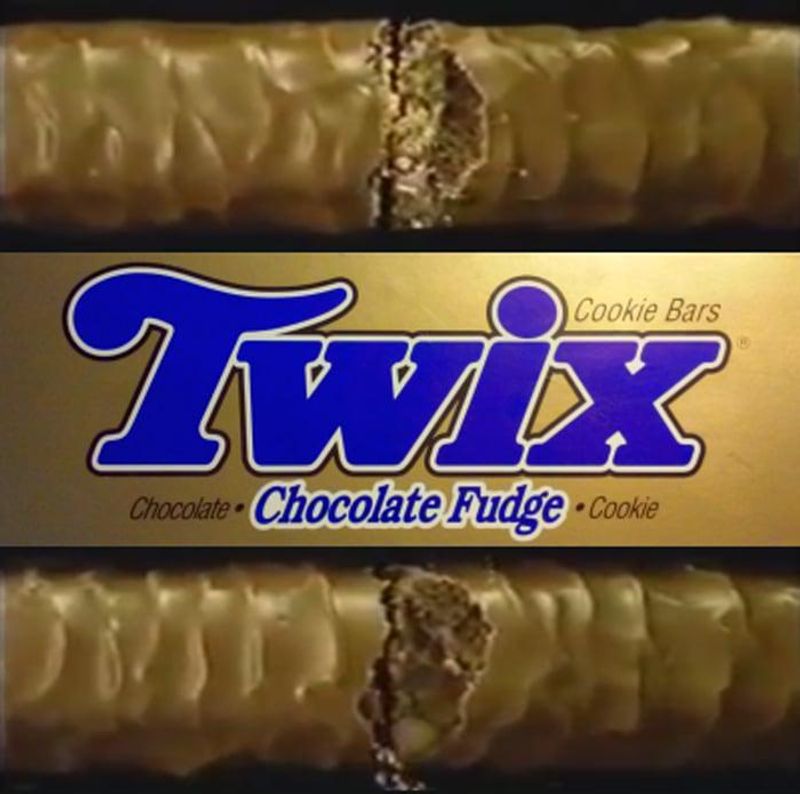
The year was 1991 when Mars decided regular Twix needed a chocolate-loving sibling. Instead of gooey caramel, these cookie bars featured a thick chocolate fudge layer that melted perfectly with each bite.
The fudgy variation developed a cult following among chocolate enthusiasts who preferred its richer taste profile. Unfortunately, sales numbers didn’t match the company’s expectations.
By 1994, Chocolate Fudge Twix vanished from store shelves, joining the graveyard of experimental candy bars. Occasional petitions for its return surface online, proving some fans never quite got over their fudgy obsession.
2. Nestlé White Crunch
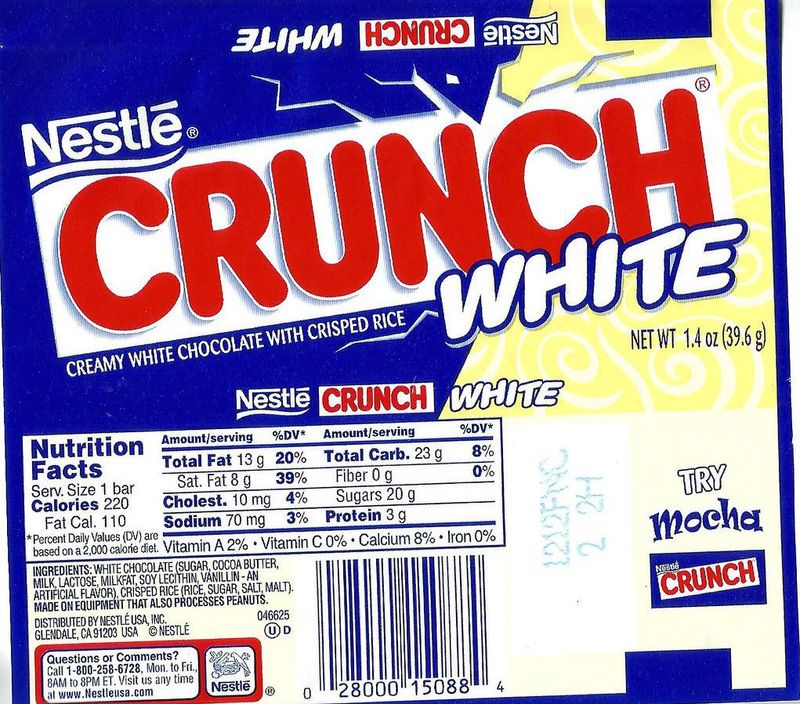
Sweet, creamy, and impossibly satisfying – White Crunch bars transformed Nestlé’s classic crisped rice chocolate into something magical. The smooth white chocolate coating paired perfectly with those signature crunchy rice bits.
Kids of the ’90s treasured finding these pale golden bars in their lunch boxes. The white chocolate variation offered a vanilla-forward flavor profile that stood apart from milk chocolate options crowding candy aisles.
Mysteriously, Nestlé phased out White Crunch in the early 2000s despite its passionate following. Occasional limited returns have occurred since then, but the permanent absence leaves fans scanning specialty candy shops hoping for a nostalgic reunion.
3. Minute Maid Frozen Juice Bars
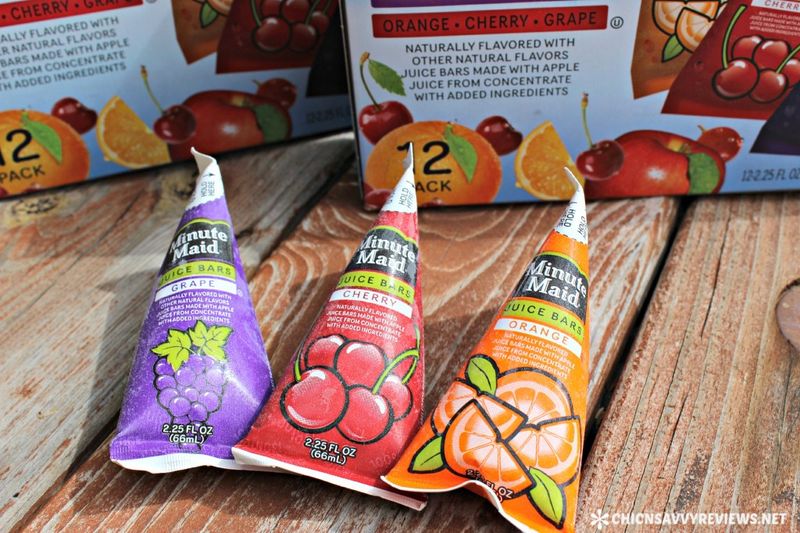
Summer afternoons in the ’80s and ’90s weren’t complete without the refreshing tang of Minute Maid Frozen Juice Bars. These vibrant popsicles packed real fruit juice into perfectly portioned frozen treats that left colorful stains on countless children’s faces.
Parents appreciated their slightly healthier profile compared to sugar-loaded alternatives. The iconic paper wrappers revealed translucent orange, grape, and cherry delights that gradually softened in the summer heat.
While similar products exist today, the original Minute Maid versions faded away by the mid-2000s. Their distinctive texture – slightly icy rather than creamy – created a unique eating experience that modern iterations haven’t quite replicated.
4. SnackWell’s Devil’s Food Cookies
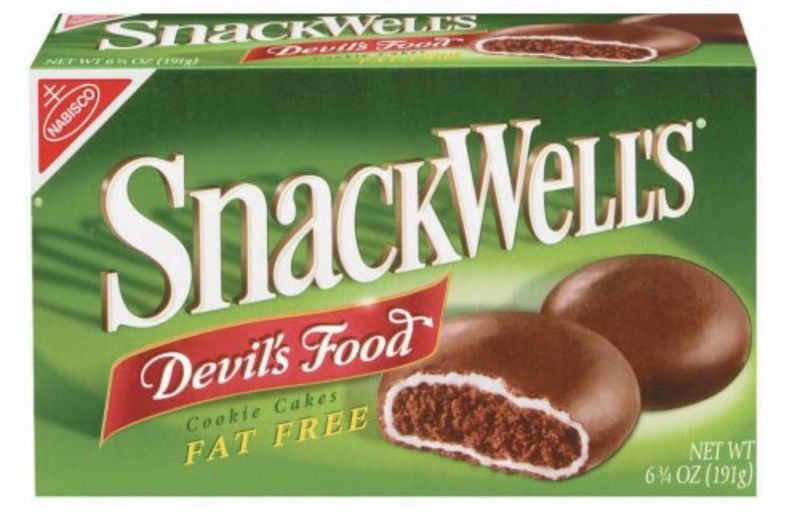
Launched in the 1990s during America’s low-fat craze, SnackWell’s Devil’s Food Cookie Cakes were pitched as a “guilt-free” indulgence—soft, chocolatey cakes with a marshmallow layer and glossy icing.
They became wildly popular, often selling out in stores, as consumers embraced the promise of fat-free snacking. The packaging’s signature green box became an icon of diet culture.
But as trends shifted and the fat-free myth faded, SnackWell’s popularity declined. The brand was officially discontinued in 2022, leaving behind memories of a time when desserts pretended to be healthy.
5. Milkshake Candy Bars

Unwrapping a Milkshake Candy Bar in the 1950s was like opening a portal to soda shop flavors. The malt-flavored nougat center delivered a creamy, distinctive taste that captured the essence of classic American milkshakes in solid form.
Hollywood’s Golden Age stars were sometimes spotted enjoying these rectangular treats between takes. The simple white wrapper with red lettering became instantly recognizable in candy displays across the country.
Production slowed by the 1970s as changing tastes favored chocolate-heavy alternatives. Today, finding an original Milkshake bar would be nearly impossible, though vintage advertisements still showcase this sweet piece of mid-century Americana that predated the modern candy landscape.
6. Uh-Oh Oreos
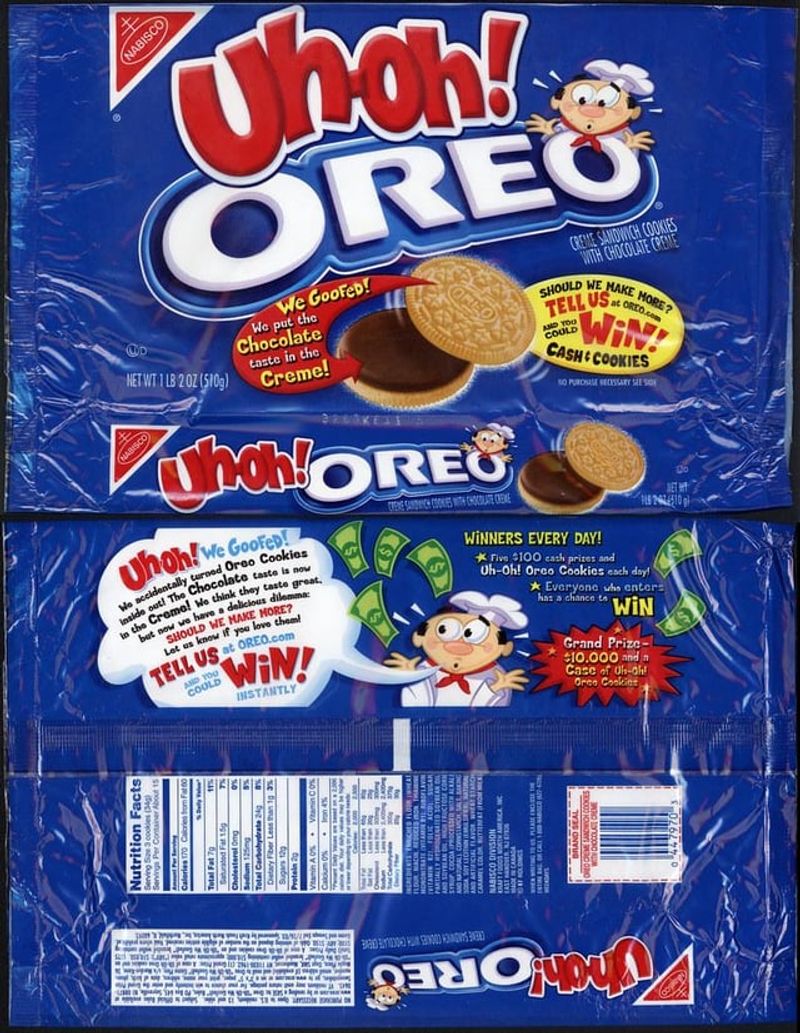
Before Golden Oreos became a permanent fixture, there were Uh-Oh Oreos – the rebellious cookie that dared to flip the script. Launched in 2003, these treats featured vanilla cookies sandwiching chocolate cream, the exact opposite of the classic design.
The playful name suggested you’d grabbed the wrong cookie by mistake. Kids delighted in the novelty, often conducting taste tests comparing them to traditional Oreos during school lunches.
Nabisco eventually realized they had a winner but needed more sophisticated branding. By 2007, the exact same cookie was reintroduced as “Golden Oreos with Chocolate Creme” – essentially killing off the Uh-Oh name while keeping the concept alive under a more marketable identity.
7. Starburst Fruit Twists
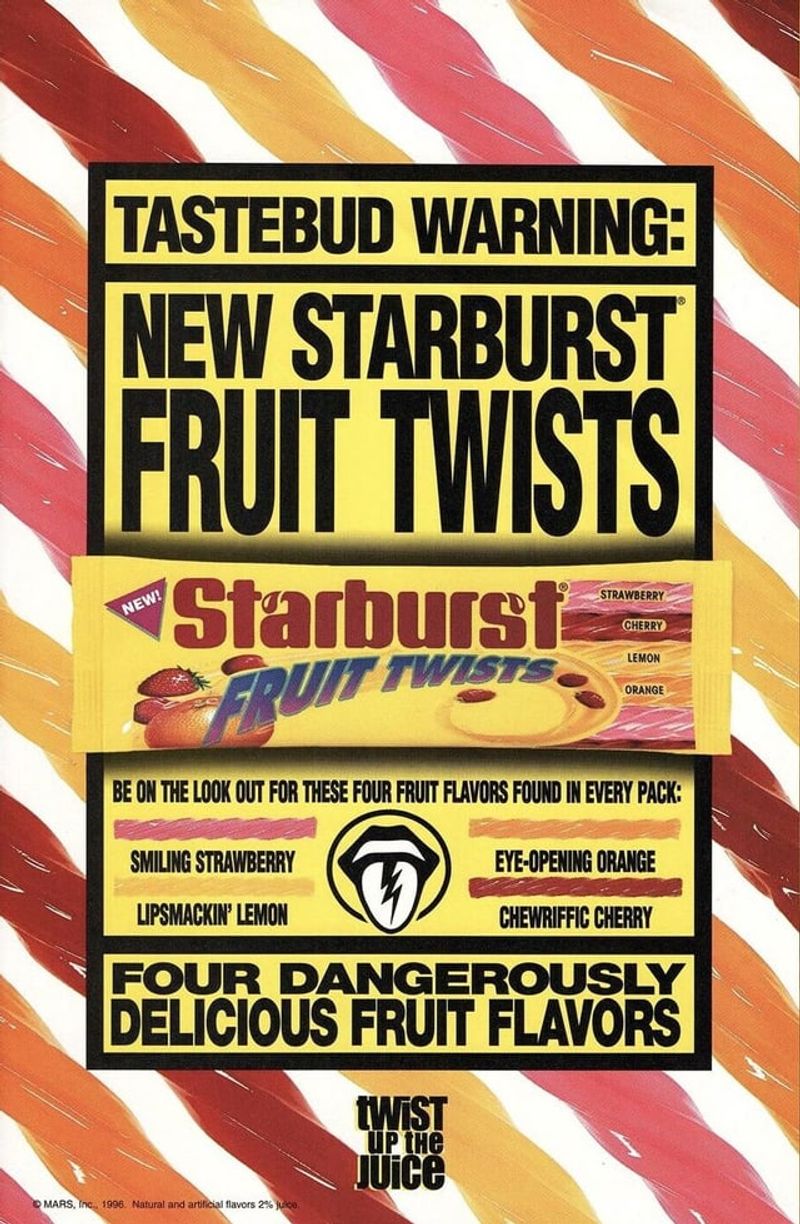
Candy aisles briefly brightened with Starburst Fruit Twists – rope-like chewy candies that stretched the beloved brand beyond its square comfort zone. These colorful twisted ropes delivered the familiar fruity punch of regular Starbursts but in a fun, pull-apart format.
The satisfying texture allowed kids to unravel each strand before eating, extending the enjoyment factor. Commercials featured teenagers dramatically stretching the candy in slow motion, emphasizing its playful, interactive quality.
Despite initial excitement, Fruit Twists couldn’t compete with established rope candy competitors like Twizzlers and Red Vines. By the mid-2000s, they disappeared from shelves, leaving fruit candy enthusiasts with only the classic Starburst squares as consolation.
8. McDonald’s Breakfast Happy Meals
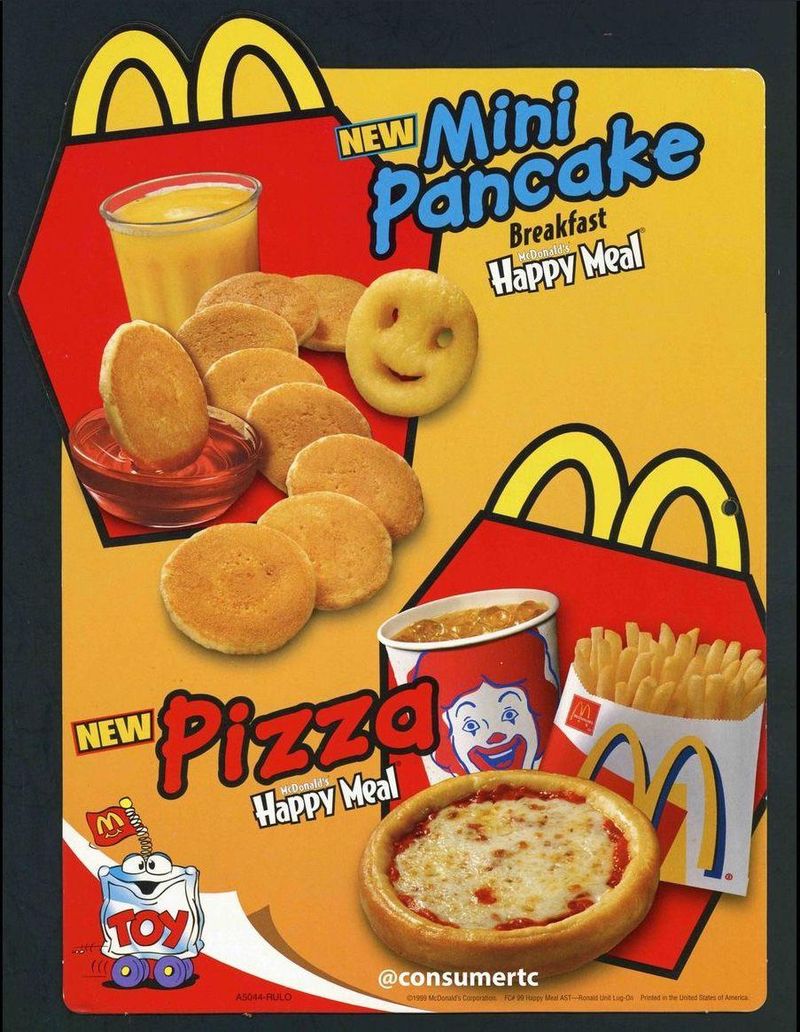
Morning visits to McDonald’s in the early 1990s occasionally featured a rare treasure: Breakfast Happy Meals. These limited-time offerings packed miniature hotcakes, scrambled eggs, and breakfast sausage into colorful boxes complete with morning-themed toys.
Regional test markets saw variations including McGriddle-based meals and breakfast burritos aimed at younger customers. The morning-friendly toys often featured characters from Saturday morning cartoons wearing pajamas or holding alarm clocks.
McDonald’s quietly discontinued the breakfast option after determining that morning family visits weren’t frequent enough to justify the specialized production. Today, kids wanting a morning McDonald’s treat must order from regular breakfast menus, missing out on the specialized experience their parents might fondly remember.
9. Jell-O for Salads
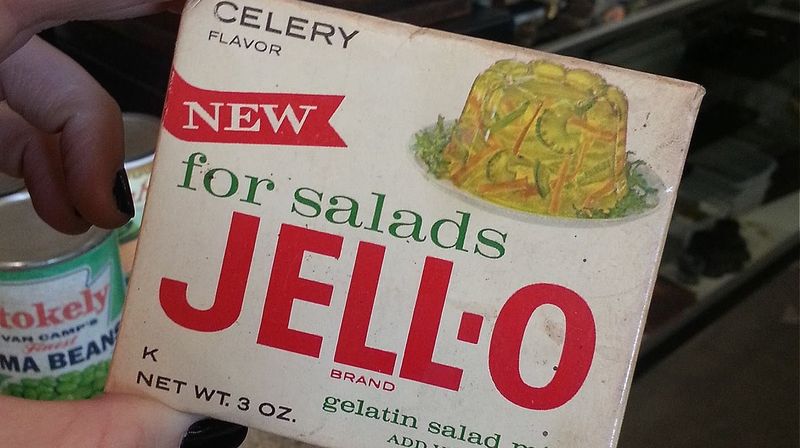
The mid-1960s witnessed perhaps the strangest Jell-O experiment ever: savory flavors specifically designed for dinner salads. Vegetable, celery, mixed vegetable, and Italian varieties joined the gelatin lineup, promising convenient molded salads for modern homemakers.
Recipe booklets suggested combining these flavors with everything from tuna to olives. Advertisements showed perfectly molded rings of jiggly vegetable-suspended gelatin presented proudly at dinner parties as sophisticated side dishes.
America collectively raised an eyebrow at the concept. Sales plummeted almost immediately after launch, and by 1967, these savory varieties disappeared forever. Today, vintage boxes command high prices among collectors of retro kitchen curiosities and stand as monuments to an era when convenience occasionally trumped culinary common sense.
10. Creamsicle Oreos
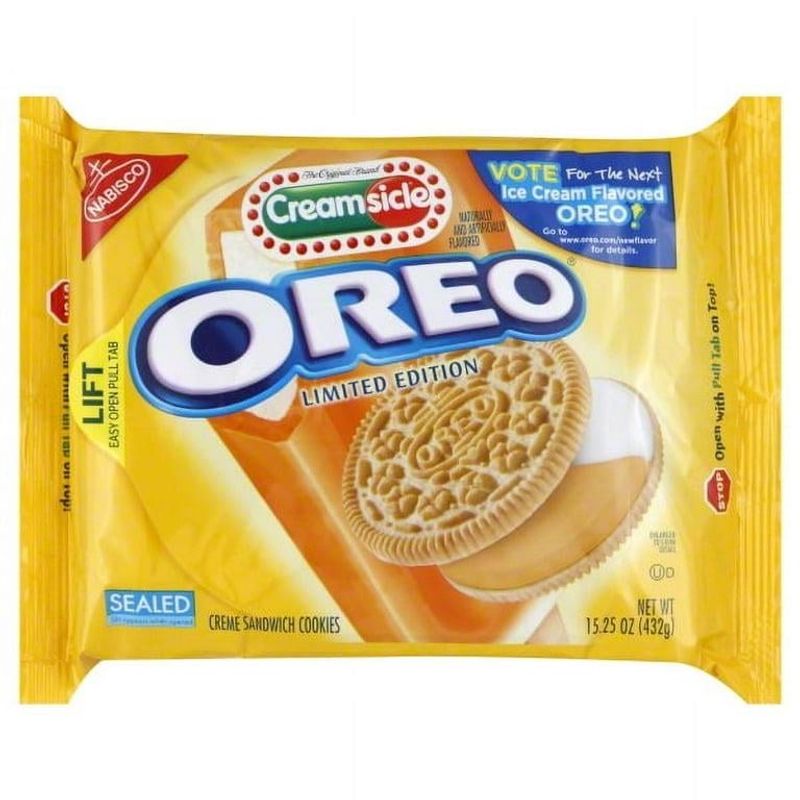
Summer 2011 brought a limited-edition cookie that captured the essence of a frozen childhood favorite. Creamsicle Oreos paired vanilla cookies with layers of orange and vanilla creme that perfectly mimicked the classic popsicle’s flavor profile.
The bright orange filling created an eye-catching contrast against the pale cookies. Many fans developed special eating techniques – some twisted them open to enjoy the dual-colored filling first, while others dunked them in milk for the full experience.
Despite passionate fan reactions, Nabisco relegated these treats to one-time seasonal status. Occasional online petitions call for their return, especially during summer months when creamsicle cravings peak, but the original orange-vanilla combination remains locked in the Oreo vault of discontinued varieties.
11. Mike and Ike Cherry Vanilla
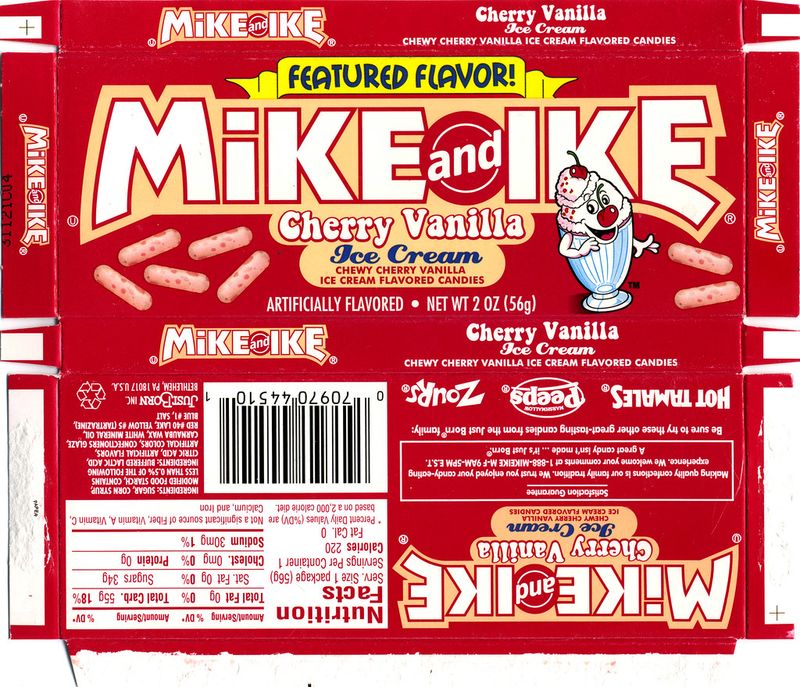
Mike and Ike ventured beyond fruit-only territory in the early 2000s with their Cherry Vanilla variety. These oblong candies featured a revolutionary combination – half were traditional cherry, while the other half delivered creamy vanilla with subtle cherry undertones.
The distinctive red and white box stood out from the brand’s typical bright packaging. Candy enthusiasts appreciated the more sophisticated flavor profile that bridged the gap between fruity and creamy candy categories.
Limited distribution and niche appeal sealed this variety’s fate within a few years of launch. While the main Mike and Ike line continues with seasonal variations, the Cherry Vanilla experiment remains a fond memory for those who appreciated its unique taste profile that successfully translated a classic ice cream flavor into chewy candy form.
12. Oreo Big Stuf
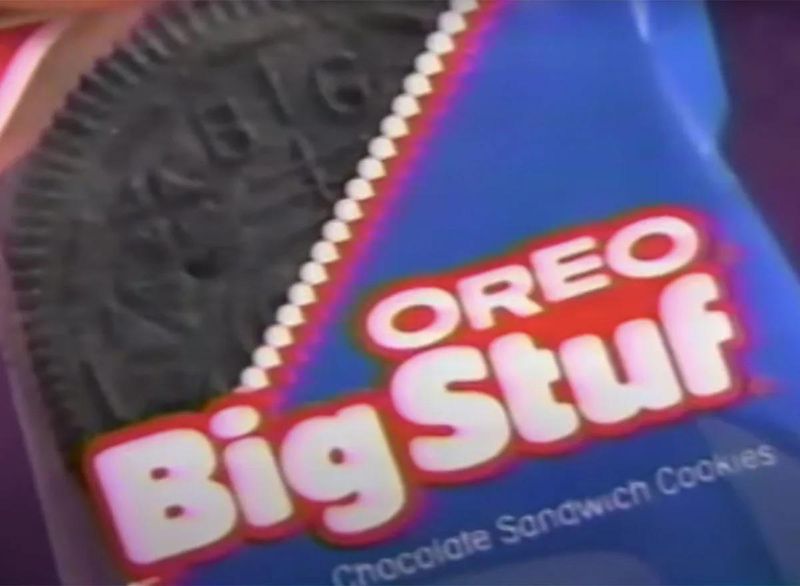
The Oreo Big Stuf was a supersized take on the classic cookie, launched in 1984. Each came individually wrapped and packed with more creme and cookie than anyone needed—gloriously.
It became a lunchbox legend for kids who loved excess and a novelty for Oreo fans everywhere. With ten times the filling of a standard Oreo, it was pure indulgence.
Despite its cult following, the Big Stuf was discontinued by 1991. Its size, calorie count, and production cost doomed it—but nostalgic fans still dream about its brief reign of cookie dominance.
13. Lay’s WOW! Chips
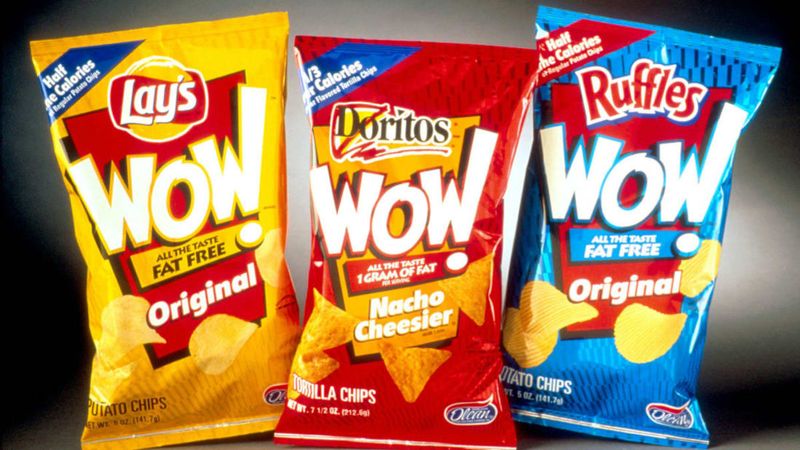
The 1990s fat-free craze reached its peak with Lay’s WOW! chips – the miracle snack promising guilt-free munching through the magic of olestra. These potato chips looked and tasted remarkably similar to regular versions but contained zero fat thanks to the controversial fat substitute.
Initial sales skyrocketed as diet-conscious consumers emptied store shelves. The packaging featured dramatic “0g FAT” declarations that seemed too good to be true for full-flavored chips.
Unfortunately, olestra came with an embarrassing side effect – digestive disturbances that earned these chips some unfortunate nicknames. By the early 2000s, FDA warning labels and bad publicity killed the brand, though reformulated versions later returned under the less exciting “Light” label without the notorious ingredient.
14. Superman Peanut Butter
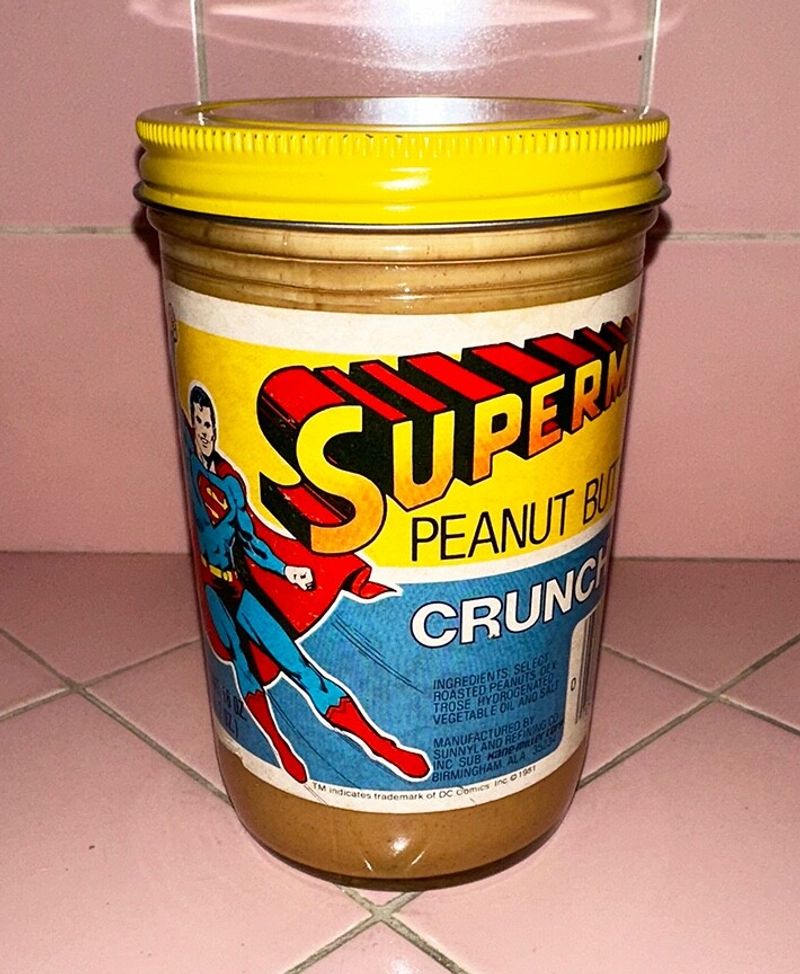
Breakfast tables in the 1980s occasionally featured the Man of Steel’s official peanut butter – a bright blue jar adorned with Superman’s muscular form promising “super” nutrition. The product itself contained standard peanut butter, though urban legends persist about special blue streaks mixed in.
Kids begged parents for this heroic spread mainly for the collectible jars. Empty containers often enjoyed second lives as pencil holders or piggy banks long after the contents disappeared.
As superhero licensing deals shifted, Superman Peanut Butter vanished from grocery shelves by the early 1990s. Today, vintage jars command impressive prices from collectors of both superhero memorabilia and retro food packaging, preserving this unusual moment when superheroes expanded from comic pages to pantry shelves.
15. McDonald’s Cherry Sundaes
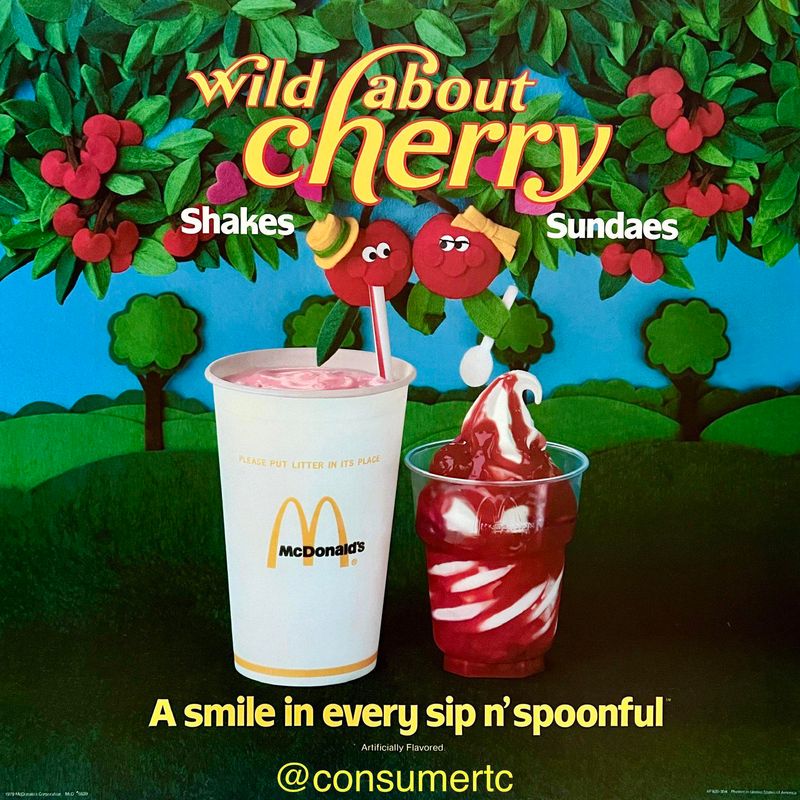
Before McFlurries dominated the McDonald’s dessert menu, cherry sundaes reigned supreme alongside their hot fudge counterparts. These simple pleasures featured vanilla soft serve topped with vibrant red cherry sauce filled with whole fruit pieces.
The distinctive red plastic cups with domed lids became instantly recognizable symbols of special treats. Many customers developed ritualistic eating patterns – some saving all the cherries for last, others methodically mixing sauce and ice cream for the perfect ratio in each bite.
McDonald’s gradually phased out cherry sundaes in the early 2000s as menu streamlining eliminated less popular items. Caramel and hot fudge varieties survived the cuts, leaving cherry lovers with no recourse but to visit old-fashioned ice cream parlors for their fruity sundae fix.
16. Burger King Mac n’ Cheetos
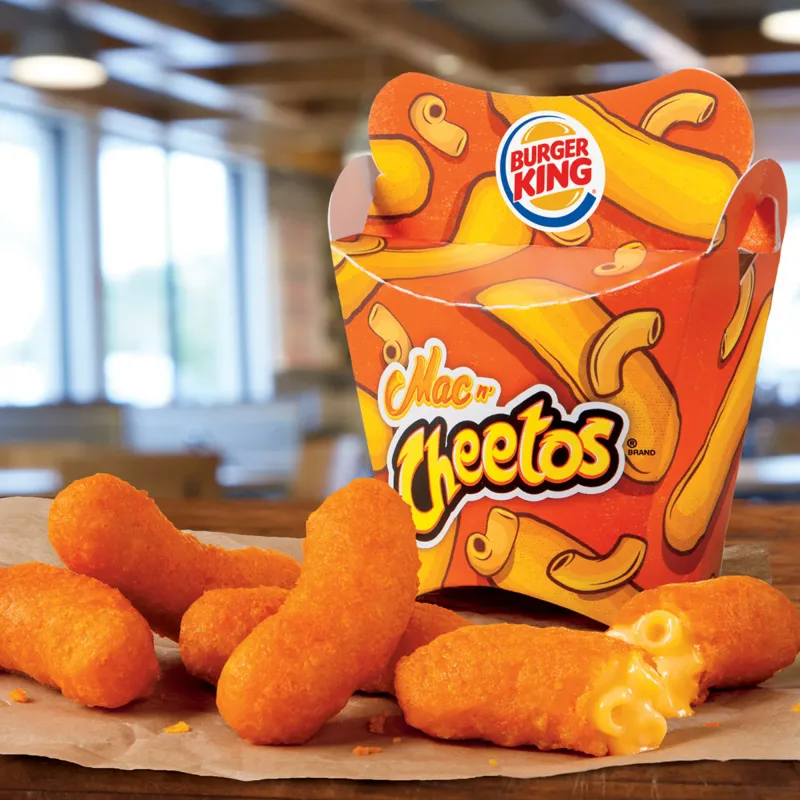
Culinary boundaries were shattered in 2016 when Burger King unleashed Mac n’ Cheetos upon unsuspecting fast food patrons. These bizarre creations stuffed creamy macaroni and cheese into mozzarella stick-shaped tubes, then coated everything in bright orange Cheetos dust.
Social media exploded with reaction videos showcasing first-bite experiences. The limited-time offering generated massive publicity, with customers forming long lines specifically to try the unusual mashup that delivered both cheesy pasta and Cheetos flavor in each bite.
Despite the initial buzz, these fluorescent orange sticks disappeared after their promotional period ended. Brief revivals occurred in subsequent years, but Mac n’ Cheetos never earned permanent menu status, remaining a short-lived novelty that epitomized fast food’s experimental phase of combining established snack brands.
17. Oreo Brownies
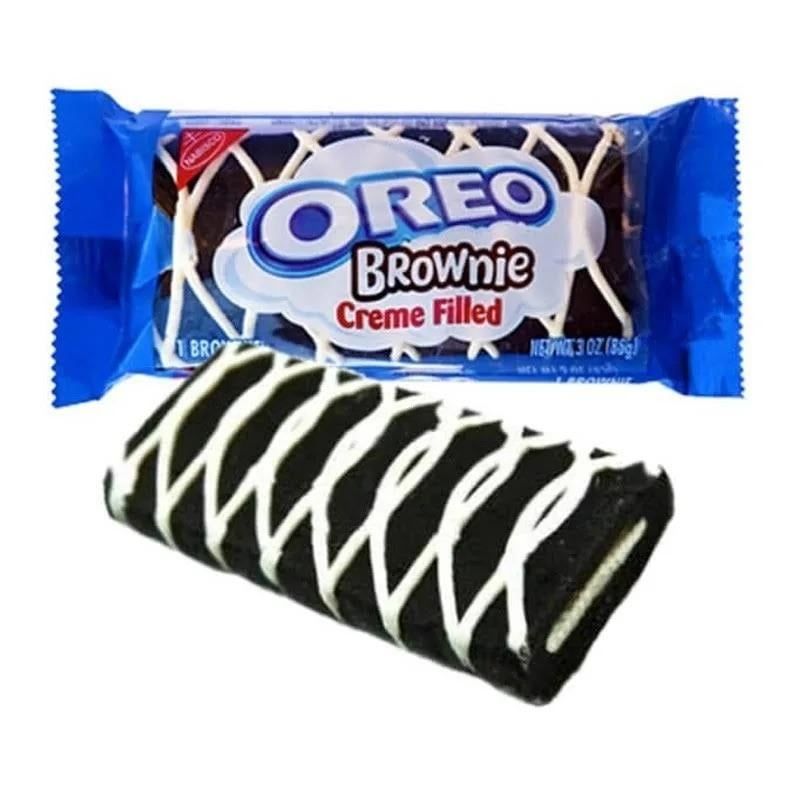
Nabisco bridged the cookie-brownie divide in 2013 with Oreo Brownies – fudgy squares loaded with chunks of actual Oreo cookies throughout. These individually wrapped treats delivered the perfect hybrid experience: dense chocolate brownie texture punctuated by distinctive cookie pieces and cream filling bits.
Sold in boxes of six, they quickly became lunchbox favorites and after-school treats. The packaging featured mouthwatering cross-section images showing the generous cookie inclusions embedded in rich chocolate.
Within two years, these brownies mysteriously vanished from store shelves despite positive reviews. Occasional copycat recipes circulate online as fans attempt to recreate the perfect Oreo-to-brownie ratio, but the convenience and specific texture of the originals remain elusive to those who remember their brief but delicious existence.
Leave a comment